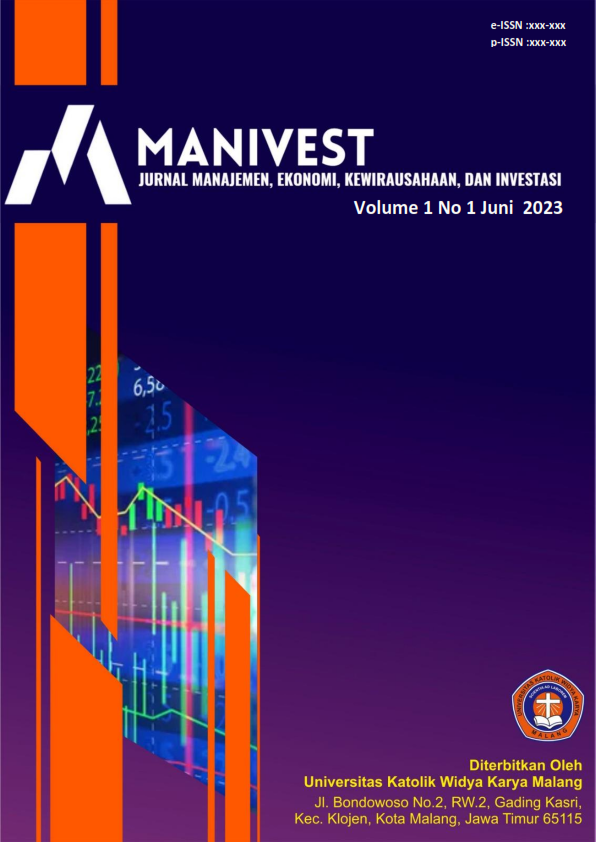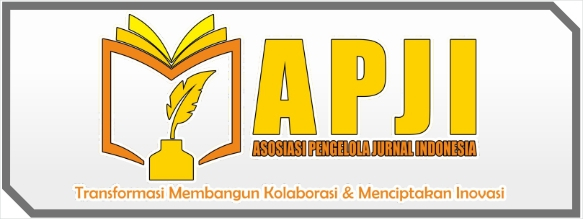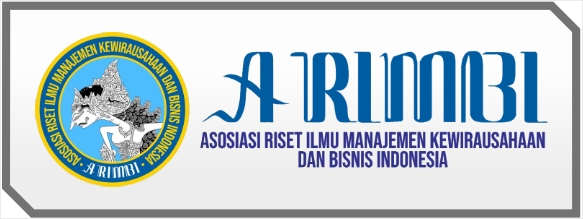Pengaruh Rekrutmen Dan Pelatihan Terhadap Produktivitas Kerja
(Studi pada Karyawan PT Wirifa Sakti Feedmill Ngoro Mojokerto)
DOI:
https://doi.org/10.37832/manivest.v1i2.50Keywords:
recruitment, training, work productivity.Abstract
Effective recruiting and training initiatives play a crucial role in facilitating the attainment of a company's predetermined goals and objectives. Hence, enhancing the skills and capabilities of every employee has significant importance. In order to establish the sample, a saturation sampling approach was used, consisting of 100 respondents. The data collecting method utilised for this study was the administration of a questionnaire. In order to address the issue statement and evaluate the presented hypothesis, statistical methods will be used using the IBM SPSS Statistics 22 software. The assessment of research instruments via the use of validity, reliability, and descriptive data analytic examinations. The measurement of recruiting effectiveness encompasses three key indicators: basic recruitment, external sources, and the impact of recruitment techniques on work productivity is shown to be both positive and statistically significant. This assertion is supported by the findings of the first hypothesis test conducted on the impact of recruiting on work productivity, yielding a statistically significant result (X1) with a p-value of 0.000. Based on the available evidence, it may be inferred that the initial hypothesis has been validated and can be accepted. Training is assessed using six variables, specifically: teacher, participants, content, methods, objectives, and targets, and it has a substantial and favourable impact on job productivity. The findings of this study indicate that the second hypothesis, which examines the impact of training on work productivity, yielded a statistically significant result of 0.000. This suggests that the training intervention has a positive and substantial influence on work productivity. Consequently, the second hypothesis is verified and accepted. The statistical significance of the simultaneous test assessing the impact of X1.
References
Dessler, G. (2013). Fundamentals of Human Resource Management. Pearson.
Dessler, G. (2017). Manajemen Sumber Daya Manusia (9th ed.). Indek Kelompok Gramedia.
Hasibuan, H. M. (2019). Manajemen Sumberdaya Manusia. Bumi Aksara.
Siagian, S. S. I., & Khuzaini, K. (2015). Pengaruh Pelatihan, Kepuasan Kompensasi, Motivasi Dan Disiplin Kerja Terhadap Kinerja Karyawan. Jurnal Ilmu Dan Riset Manajemen (JIRM), 4(5), 1–18.
Sadono, S. (2004). Makroekonomi, Teori Pengantar. PT Raja Grafindo Persada.
Simamora, H. (2013). Manajemen Sumber Daya Manusia (1st ed.). STIE YKPN Yogyakarta.
Sulaeman, A. (2014). Pengaruh Upah Dan Pengalaman Kerja Terhadap Produktivitas Karyawan Kerajinan Ukiran Kabupaten Subang. Trikonomika, 13(1), 91–100.
Sunarsi, D. (2018). Pengaruh Rekrutmen, Seleksi dan Pelatihan Terhadap Produktivitas Kerja Karyawan. Jurnal KREATIF : Pemasaran, Sumber Daya Manusia Dan Keuangan, 6(1), 14–31.
















